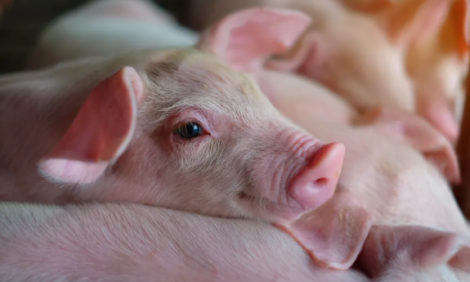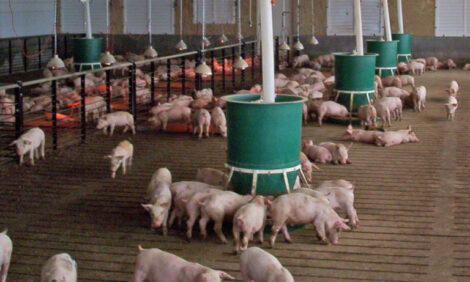



US Pork Outlook Report - October 2009
The decline in pig inventories is estimated to continue into 2010, according to Kathryn Quanbeck and Rachel J. Patton from the USDA Economic Research Service (ERS) in the October 2009 Livestock, Dairy and Poultry Outlook.Highlights
The Quarterly Hogs and Pigs report showed inventories of breeding animals more than three per cent lower year-over-year, suggesting the industry may be responding to persistent negative returns. Prices of live equivalent 51-52 per cent lean hogs are expected to average $34 and $36 per cwt. August pork exports were 18 per cent lower than a year ago. Pork imports were almost 8 per cent higher than August 2008, while imports of live swine from Canada were sharply lower.
US Breeding Inventory Declines
On 25 September, USDA released the Quarterly Hogs and Pigs report showing that the 1 September inventory of breeding animals had declined more than three per cent compared to the inventory of a year earlier. This decrease was the steepest September drop since the 8.4 per cent year-over-year decline registered for 1 September 1999. Producers at that time were responding to negative returns that began in late 1997. The current lower breeding inventories are likely producers’ response to persistently negative returns that began late in 2007.
Although sow slaughter – an important means of breeding herd reduction – has accelerated recently, there has not yet been a single week in 2009 where net US sow slaughter has exceeded year-ago levels. Net sow slaughter is calculated by subtracting weekly US imports of sows for slaughter, from weekly actual federally inspected sow slaughter.

Sources: Weekly actual federally inspected sow slaughter
US imports of slaughter sows/boars
Despite hog producers’ willingness to reduce sow numbers, it could be that slaughter demand for sows is limited by seasonal product (i.e. sausage) demand, and marketing considerations for branded sausage products. In fact, there is some anecdotal evidence to suggest that sow slaughter plants are 'booked' for weeks into the future.
Two implications in particular arise from a situation where supply of sows for slaughter exceeds demand by sow processors. Firstly, the 'excess supply of sows' situation in which the US pork industry currently finds itself will likely slow down the rate of the breeding herd contraction necessary to return hog producers to profitability. Second, the rate of gilt retention becomes relatively more important as a means of reducing breeding inventories than it might be under circumstances where sow packers significantly increase weekly kill numbers. However, data on gilt slaughter is largely proprietary, making robust estimates of gilt retention difficult to achieve.
1 September hog inventories and expectations of reduced farrowings suggest a 2010 commercial pork production of 22.4 billion pounds, almost three per cent below 2009. Prices of 51-52 per cent live equivalent lean hogs are expected to be $39.69 per cwt for 2009. For the fourth quarter of 2009, prices are expected to average $34 to 36 per cwt.
Exports Lower in August
August pork exports came in at 308 million pounds, more than 18 per cent below a year ago. Shipments to all major foreign markets were year-over-year lower, with the continued exception of Mexico, whose imports of US pork products were almost 39 per cent higher than August 2008. Shipments to some smaller foreign markets were also higher, including to Australia, where they were more than double those of August 2008. Exports to the Caribbean region, as well as to South and Central America were also year-over-year higher. While shipments to China were 26 per cent ahead of a year ago, they were partially offset by 33 per cent lower exports to Hong Kong.
August pork imports, at about 68 million pounds, were almost eight per cent above a year ago. Most of the increase came from Canadian imports; those from Denmark were about three per cent lower than August 2008. US imports of live swine were almost 443,000 head, more than 37 per cent lower than a year ago, as all categories of imported hogs and pigs were lower across the board.
Further Reading
| - | You can view the full report by clicking here. |
October 2009








